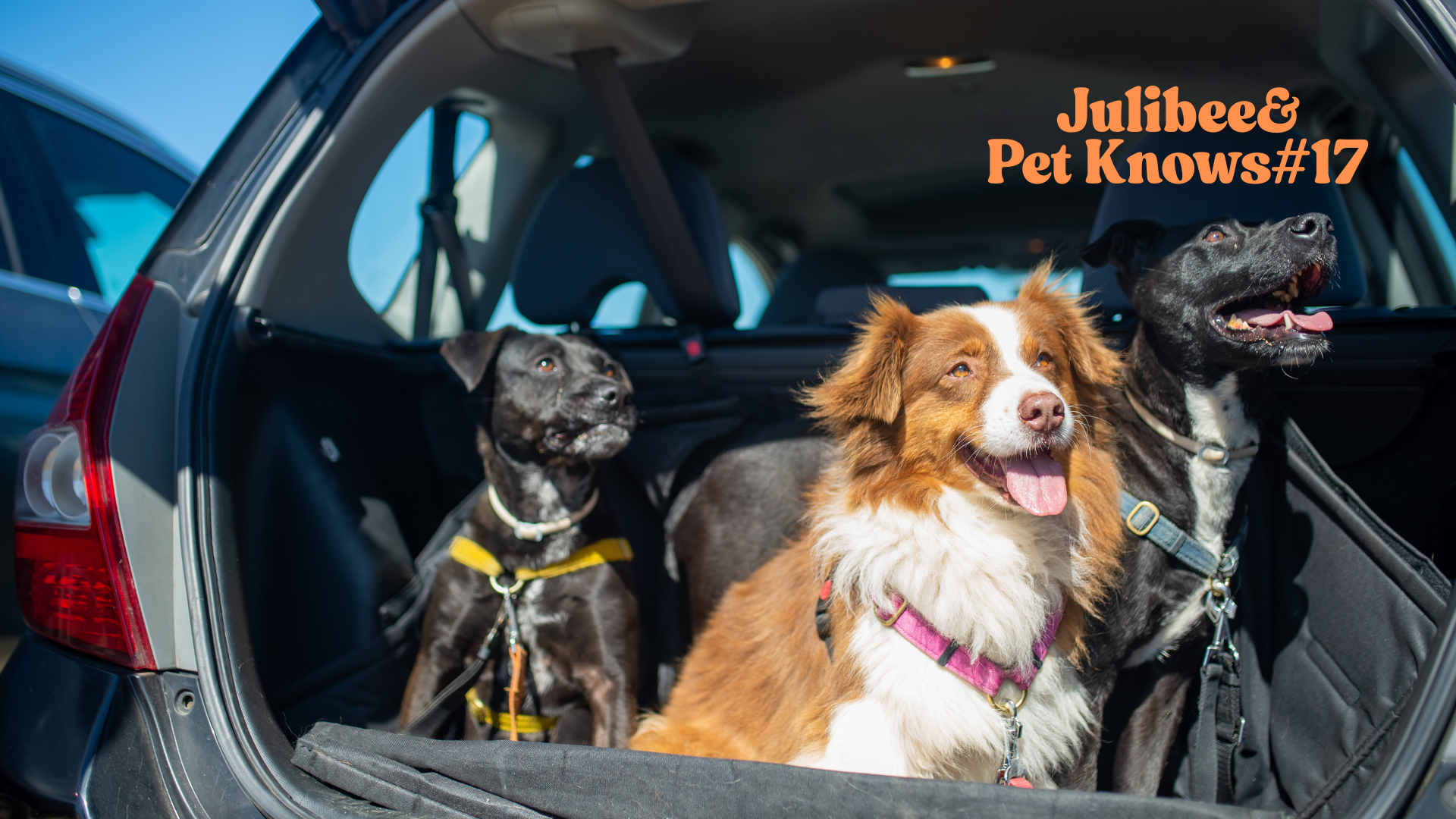
The Canine Traveler's Lifesaver: Your Essential Dog First-Aid Kit Checklist
The Canine Traveler's Lifesaver: Your Essential Dog First-Aid Kit Checklist 🐶🩹🚗
Hey, fellow dog parents! We all love bringing our furry friends along on adventures, whether it's a weekend road trip or a cross-country move. But let's face it, unexpected bumps, scrapes, or tummy troubles can happen anywhere. That's why being prepared with a well-stocked dog travel first-aid kit isn't just a good idea—it's essential. At Julibees, we believe in responsible pet ownership, and that means ensuring our canine companions are safe and sound, even when we're far from home.
Consider this kit your portable peace of mind, empowering you to handle minor emergencies promptly and effectively until you can reach a veterinarian.

A. Medications (Always Consult Your Vet First!) 💊🩺
Before you pack any medications, it is crucial to speak with your veterinarian. They can provide precise dosages, discuss potential side effects, and ensure these medications are appropriate for your specific dog's health needs.
- Regular Prescription Medications: Pack an ample supply of any daily medications your dog takes for chronic conditions (e.g., heartworm prevention, seizure medication, arthritis medication). Don't forget any supplements!
- Anti-Nausea Medication: If your dog is prone to motion sickness, your vet might prescribe medication like Cerenia. This can be a lifesaver for long car rides.
- Anti-Diarrhea Medication: Things like activated charcoal or kaolin-pectin (brands like Kaopectate, but check with your vet for the pet-safe version and dosage) can help manage mild stomach upset from new environments or diet changes.
- Antihistamine (e.g., Diphenhydramine/Benadryl): For mild allergic reactions (like bee stings or bug bites), your vet might recommend diphenhydramine. Crucially, ensure it's the plain diphenhydramine, not combination cold/flu medications that can be toxic. Your vet will provide the correct dosage for your dog's weight.
- Pain Reliever/Anti-Inflammatory (Veterinary Prescribed): Never give your dog human pain relievers like ibuprofen (Advil, Motrin) or acetaminophen (Tylenol), as they are highly toxic. Your vet may prescribe a pet-specific NSAID (Non-Steroidal Anti-Inflammatory Drug) for pain or inflammation.
- Eye/Ear Cleaner: Gentle, veterinarian-approved solutions for routine cleaning or to flush out irritants after a dusty hike.
- Pet-Specific Topical Ointments: An antibacterial ointment (like Neosporin, but ensure it's the plain version without pain relievers) or an anti-inflammatory cream (prescribed by your vet) can be useful for minor cuts, scrapes, or skin irritations.
- Probiotics: Traveling can be stressful and disrupt a dog's digestive system. A good probiotic supplement can help maintain gut health and prevent travel-induced diarrhea or constipation.
- Styptic Powder/Gel: Essential for quick bleeding control, especially if you accidentally trim a nail too short.
B. Wound Care Supplies 🩹🧼
These items are your first line of defense against minor injuries.
- Disposable Gloves: Keep things sanitary when dealing with wounds.
- Saline Solution or Gentle Antiseptic Wash: For flushing and cleaning wounds. Look for pet-safe options or plain sterile saline. Avoid harsh antiseptics like hydrogen peroxide, which can damage tissue.
- Cotton Balls/Gauze Pads: For wiping and applying pressure to wounds.
- Elastic Bandages/Self-Adhering Vet Wrap: Perfect for securing dressings and providing light compression. Vet wrap sticks to itself, not fur, making it easy to use.
- Medical Tape: To secure gauze or bandages.
- Scissors/Tweezers: For cutting bandages, or carefully removing splinters, thorns, or ticks.
- E-Collar (Elizabethan Collar) or "Cone of Shame": An inflatable collar or a traditional E-collar can prevent your dog from licking or chewing at a wound, which is vital for proper healing.
- Dog-Specific Antiseptic Wipes: Convenient for quickly cleaning small cuts or scrapes on the go.
C. Other Handy Tools 🔧💡
These non-medical items can make a big difference in a pinch.
- Pet Thermometer: A digital rectal thermometer is the most accurate way to check your dog's temperature. Normal dog temperature is usually between 101°F and 102.5°F (38.3°C and 39.2°C).
- Nail Clippers and File: For quick trims or smoothing rough edges. A broken or too-long nail can be painful.
- Tick Remover Tool/Hook: Safely and effectively removes ticks without leaving head parts behind. This is crucial, especially in wooded or grassy areas.
- Flashlight: Indispensable for checking wounds in low light, or for evening potty breaks in unfamiliar territory.
- Copies of Pet ID & Records: Carry physical or digital copies of your dog's vaccination records (especially rabies), microchip information, and a brief summary of their medical history and any ongoing conditions.
- Local Emergency Vet Contacts: Before you leave, research emergency veterinary clinics near your destination and keep their addresses and phone numbers handy. The Veterinary Emergency and Critical Care Society (VECCS) website can be a good resource for finding accredited emergency hospitals.
D. Storing & Checking Your First-Aid Kit 🎒✔️
- Waterproof Bag/Container: Keep all items dry and protected from the elements. A clear, multi-compartment bag can help you quickly find what you need.
- Easy Access: Store your kit in a readily accessible spot in your car or travel bag—not buried under luggage.
- Regular Checks: Periodically go through your kit. Check expiration dates on medications and replace anything that's expired or running low. Ensure all items are present and in good condition. A good rule of thumb is to check it before every major trip.
So!🎉🐾
A well-prepared dog first-aid kit is a hallmark of a responsible pet owner. It shows you're ready for anything, allowing you to enjoy your travels with your beloved canine companion, knowing you can handle minor emergencies with confidence.
What essential items do you always pack in your dog's travel first-aid kit? Share your tips in the comments below! 👇

